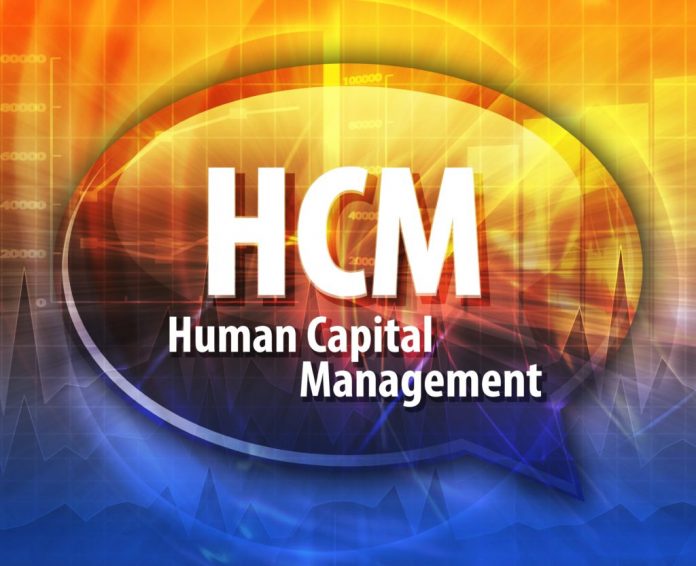Human resource professionals usually advocate for the health of employees in the workplace. But who is maintaining human resources personnel’s well-being and finding ways to help them save time and increase work efficiency?
“Why?” You might ask. It turns out that most HR employees are buried in a lot of work and often feel stressed and burnout.

The personnel management department’s largest survey of human resources professionals shows that 37% of people engaged in human resources work feel overwhelmed at least four times a month or possibly once every week. Another 50% said they feel stressed in any event once per month.
The survey also shows that 44% of human resources personnel believe that their work will harm their mental health. In comparison, 38% of human resources personnel believe that it has a negative impact on their physical health.
According to ThePayStubs HR teams need tools to help them save time and improve their daily duties’ efficiency. Although it seems that the numbers portray haze and doom, there is a silver lining. As indicated by the same survey, 56% of HR professionals believe that automation will positively impact their productiveness.

With the numerous technologies and human capital management systems (HCMS) available today, it will be a waste if they are not fully utilized, especially if they will greatly benefit your HR team.
Technology can help HR teams save time and minimize stress in the following five ways:
1. Automate the Complicated and Wrong Payroll Process
Employees expect to receive a salary. What they may not know is that people who work in human resources rarely expect salary preparation. It remains one of the heaviest burdens in the workload. Besides, salary is one of the most detailed HR tasks, requiring 100% accuracy and compliance with different regulations.
Payroll automation technology can greatly reduce the pressure associated with the payroll process. Payroll automation eliminates complex traditional processes and the possibility of errors. According to the American Payroll Association, the use of payroll automation can reduce payroll preparation costs by 80% by reducing payroll and invoice errors.
Payroll automation can also simplify complex payroll tasks, such as determining normal and overtime rates, entitlements, wage increases, and relocation.
Using powerful timing software related to your salary can also help the HR team save time. It eliminates the need to view the schedule manually. For more information, visit
https://observer.com/2021/02/adp-payroll/.
2. Authorize the HR Team for Easy Compliance Management
Among the many tasks that the HR team is responsible for, compliance management is usually completed in a short period, which makes it challenging to complete tasks on time and avoid fines.
With the human capital management system’s help, human resource professionals can set up alarms to remind employees of overtime or benefit eligibility. Automating the process also ensures that the company complies with ACA (Affordable Care Act) and FLSA (Fair Labor Standards Act) regulations.

3. Provide Convenient Access to Critical Reports
Did you know that according to the Workforce Institute, 81% of employees work outside normal working hours? In addition, 63% of employees said that even if they violate company policies, they will still work on time.
The human resources department is responsible for discovering these abnormal operations. Given that labor is the company’s largest and most expensive asset, HR professionals will plan, measure, and optimize its performance and productivity.
Again, if the HR team continues to perform this task manually, this is easier said than done. Creating reportage will consume a lot of time. This is terrible news for the already exhausted HR team.
Technologies such as timing Tracking allow HR teams to access in-depth reporting options with just a few clicks. Using comprehensive software, HR professionals can easily identify various areas of productivity and performance that need improvement. They can also customize dashboards and analysis for instantly generated reports to identify vulnerabilities in the organization’s operations and even predict potential complications before they occur.
4. Easily Define Specific Performance Indicators
One mistake that companies make when evaluating performance is to use a comprehensive set of indicators for everyone in the company. The reality is that with a diverse and nuanced workforce, key performance indicators should be tailored to accommodate this diversity.
Today, HR experts agree that the HR team should be able to define three levels of review summary:
- Organization-specific review summary
- Group-specific review information
- Individual-specific review information

The advantage of using HCM software for this purpose is that it allows the use of efficient and effective tools to record and disseminate information to match the differences between these performance indicators. The collected information will enable managers to document performance and identify areas for improvement in a customized evaluation process based on their subordinates’ specific needs.
Advanced technology can even create self-service capabilities that give employees instant online access to their own performance indicators, including on-demand training. This enables employees to propose their own career development path and create solutions for the challenges encountered.
5. Continuously Obtain Employee Feedback to Improve Engagement and Enhance Retention
Do you think it is easy to send employee feedback surveys and organize the data into simple, useful reports? Think again.
This is one of the indispensable responsibilities of every human resources team in any organization. An automated system that employees can use to provide honest and constructive feedback is one of the best ways to increase retention and promote workplace participation.
With the help of technology, the HR team can create a continuous feedback mechanism and a constant progress check plan to establish and maintain momentum, which is much more beneficial than a typical quarterly or annual survey. Using the old school method, employees were already dissatisfied when they sent the questionnaire.
The right tools provide managers and HR professionals with immediate employee feedback, which can be resolved before employee dissatisfaction becomes irreversible and before turnover affects the workplace.
Smart and Efficient HR Team Utilize Technology

The reality is that the workload of the human resources team will not be reduced soon. As workplace operations become more complex and employees’ needs evolve, human resource professionals’ responsibilities will continue to grow.
Fortunately, technology adoption can help human resources personnel perform tedious and complicated tasks more efficiently, such as salary, performance management, report creation, compliance management, and feedback collection.
Over the years, the HR team has been advocating for employee job satisfaction and workplaces that promote happiness while improving productivity. Considering the key role that the HR team plays in the organization, it is time for us to help its leaders.
Conclusion: Technology is the key to improving the productivity of HR teams
Productivity has always been a hot topic. With the growth and changes in workplace requirements, people’s focus has shifted to how the human resources team can improve work efficiency without working more.
For companies looking to integrate technology to increase productivity, focusing on these three key human resource areas (recruitment, salary, and employee engagement) is an ideal start. After all, having an efficient personnel department will positively impact any organization throughout the company.
For more information visit UZIO









